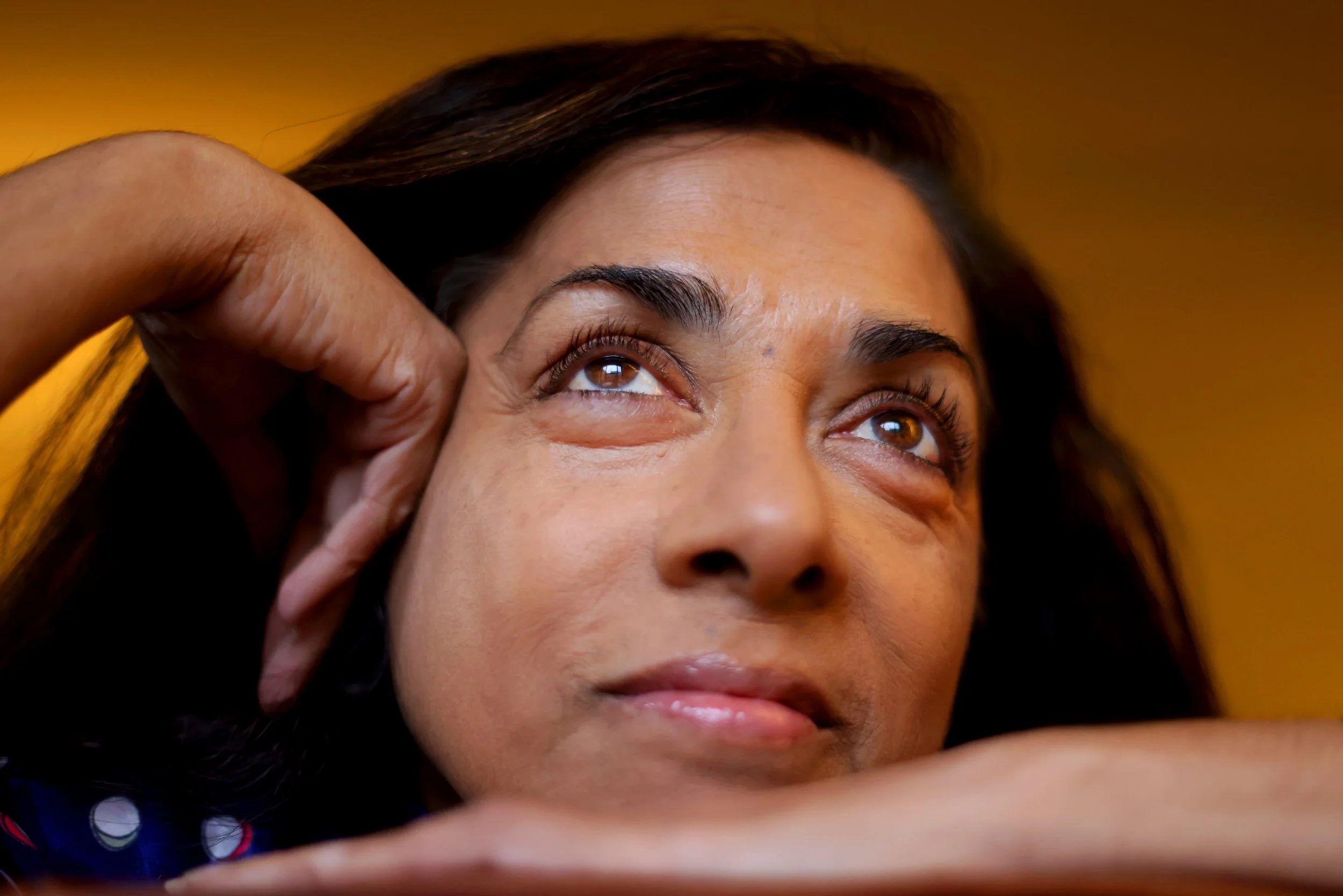
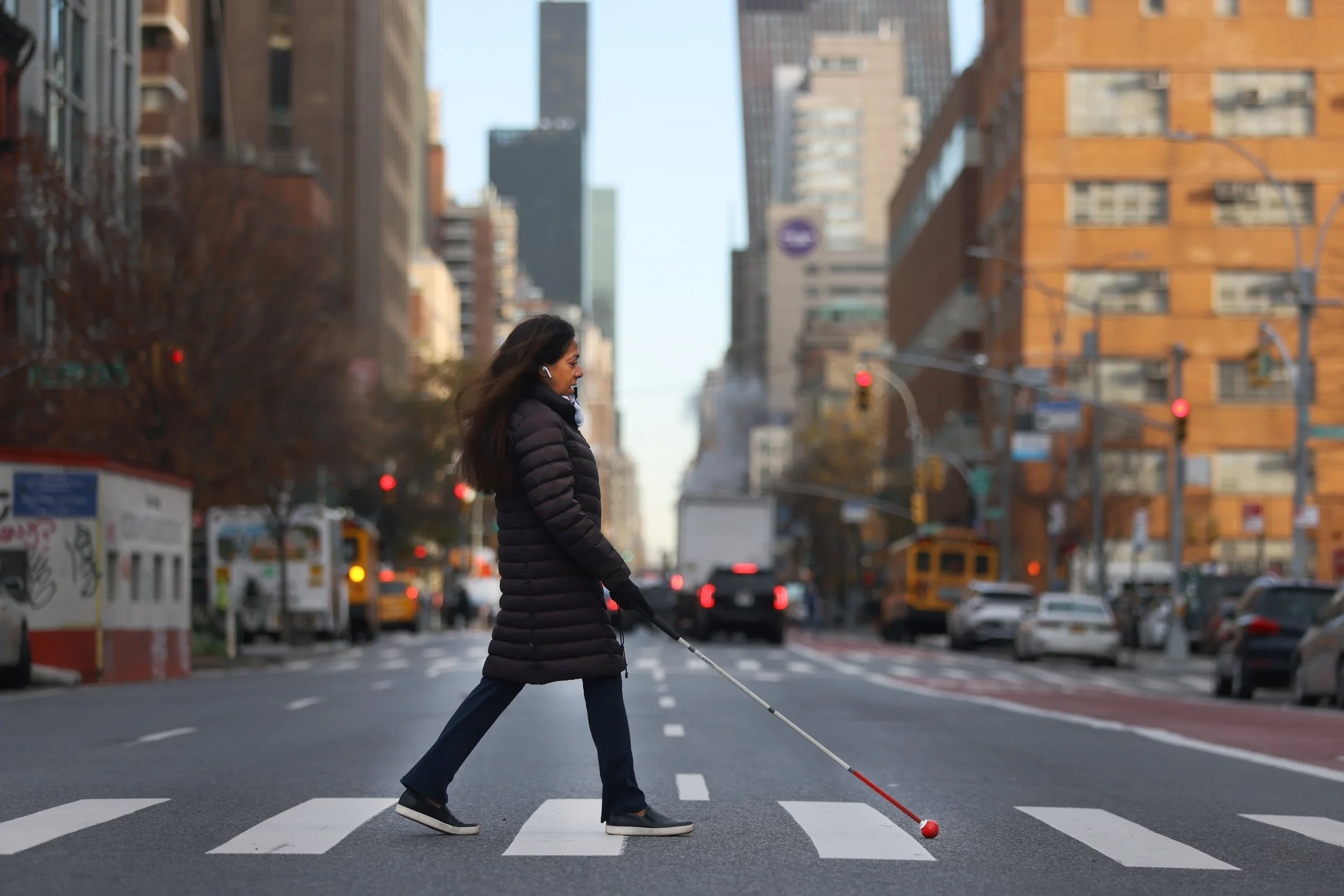
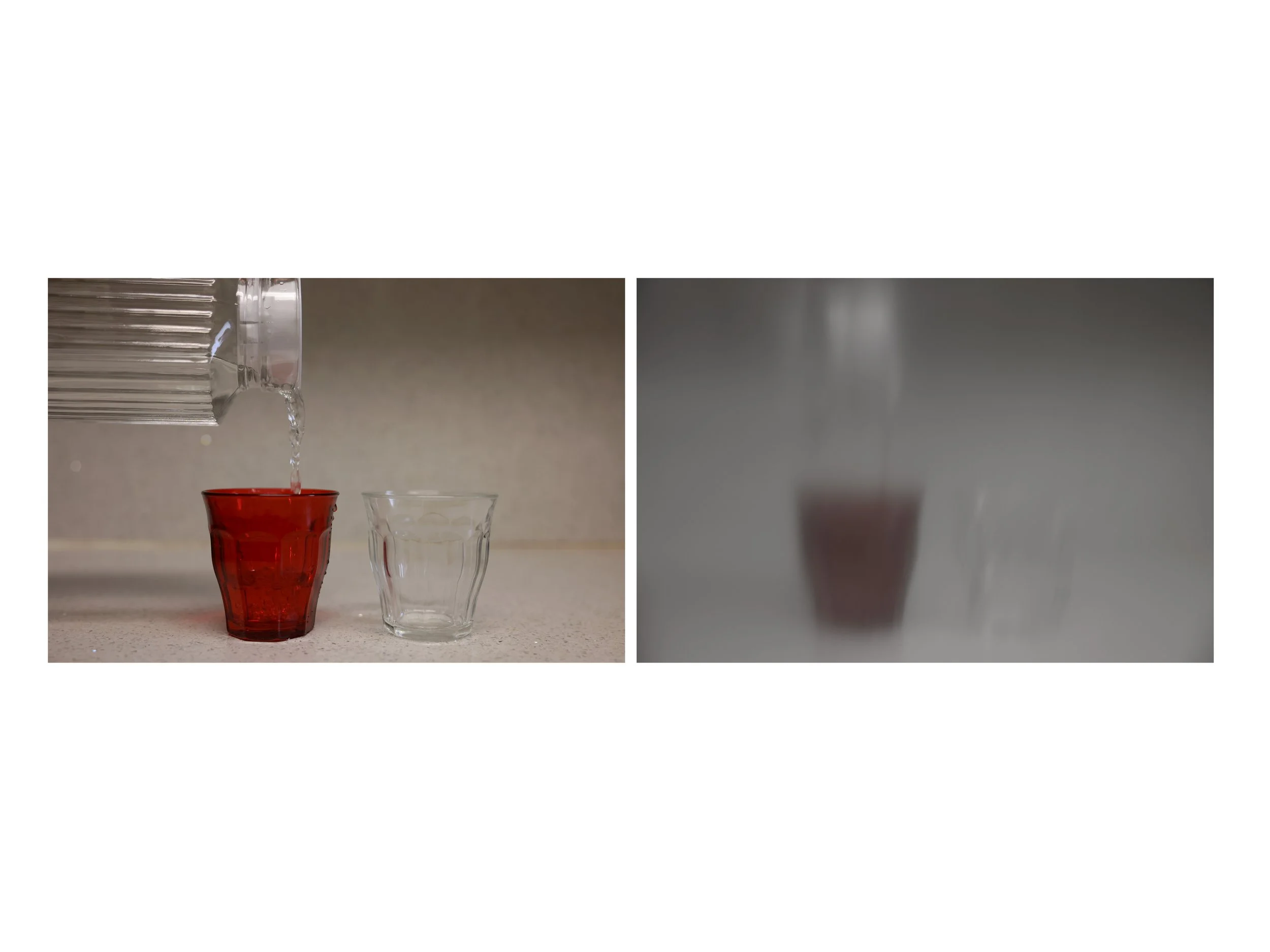
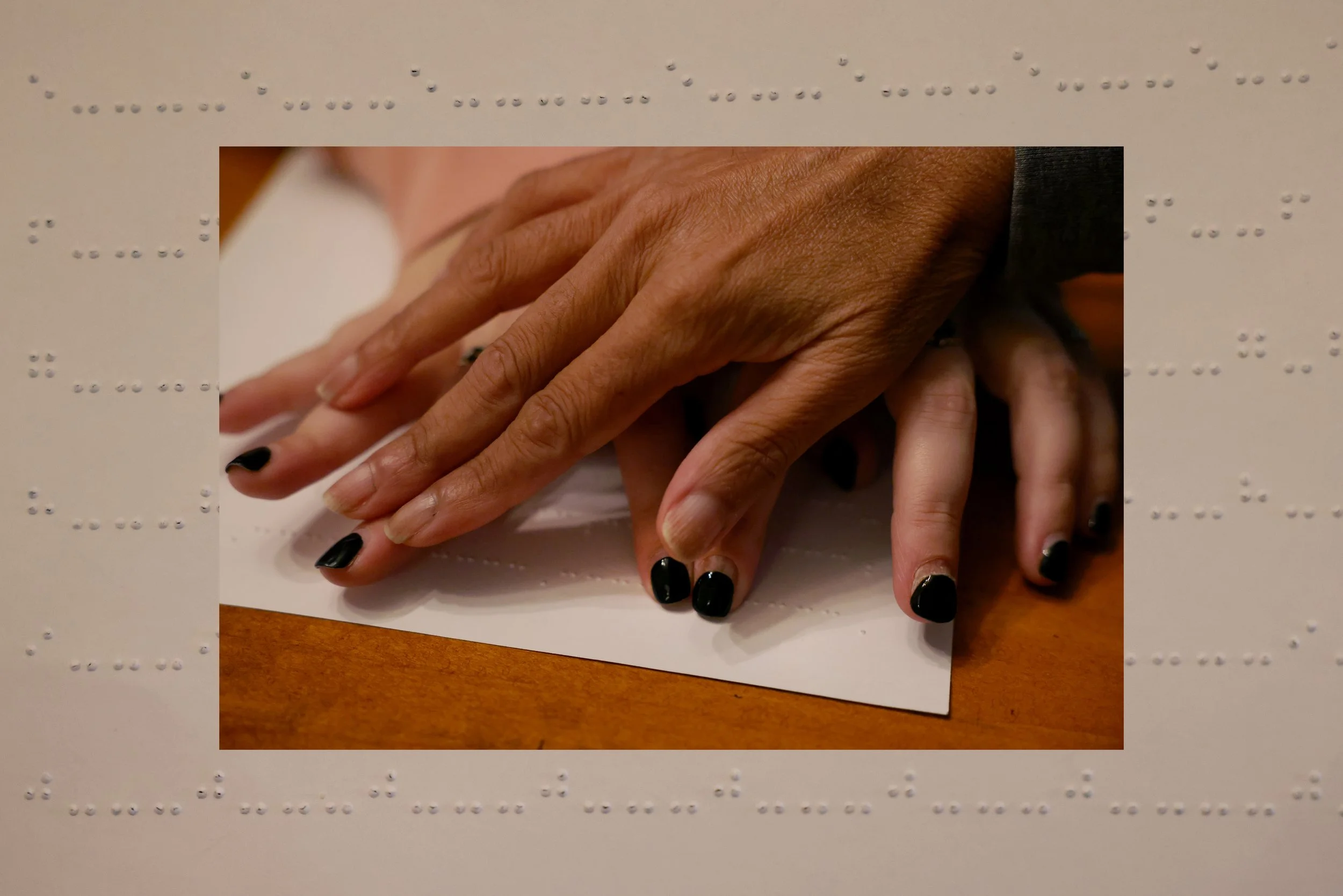
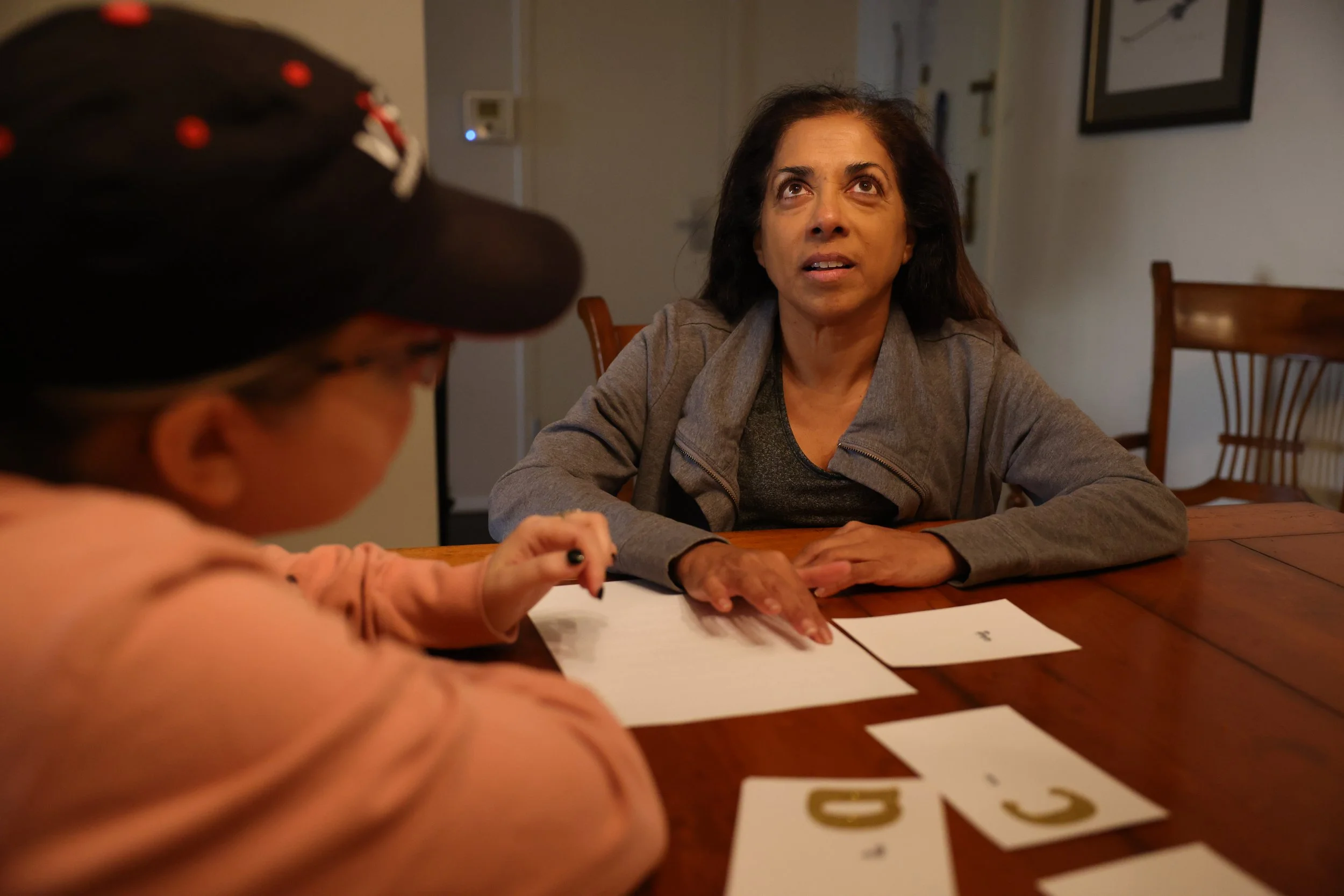
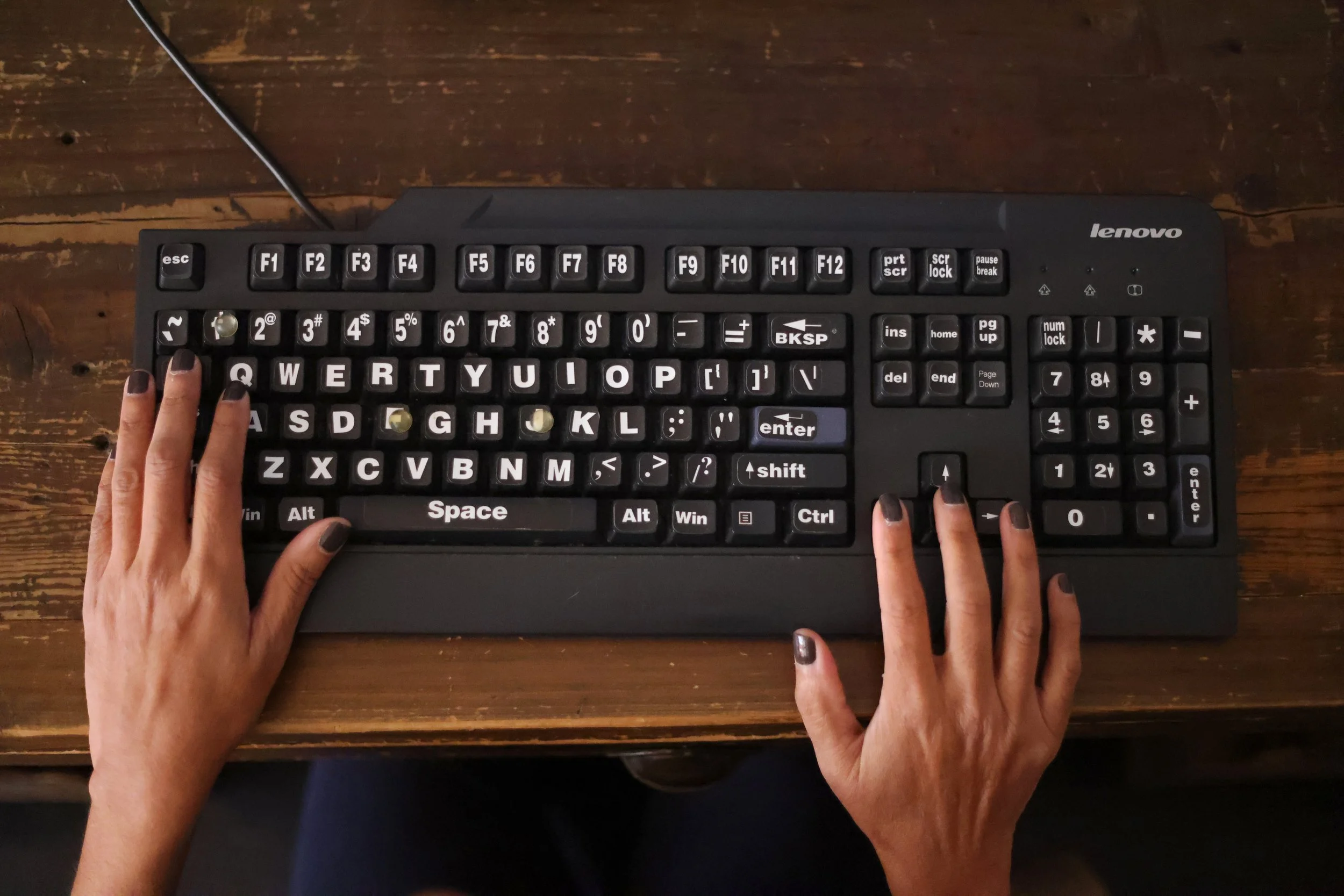
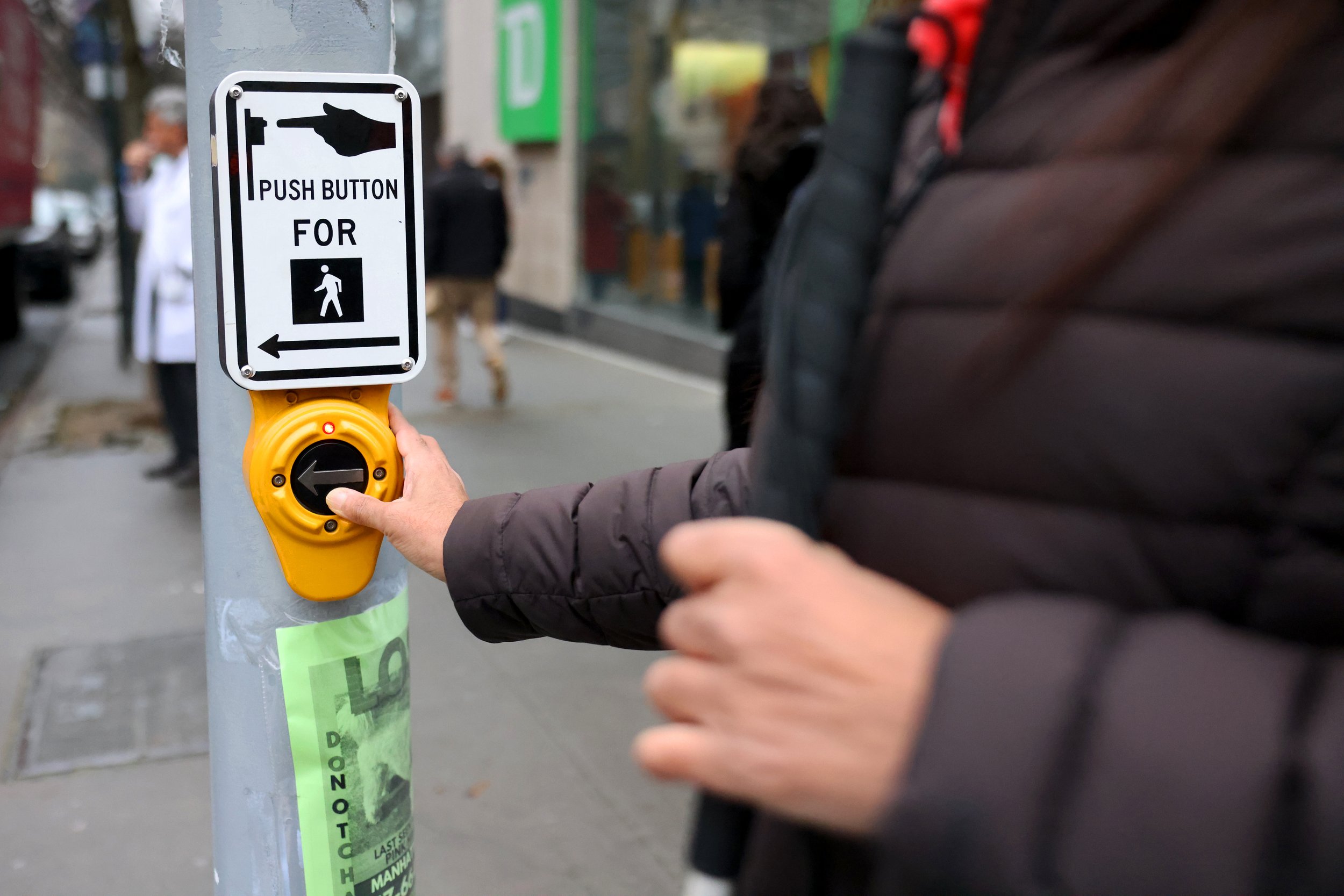
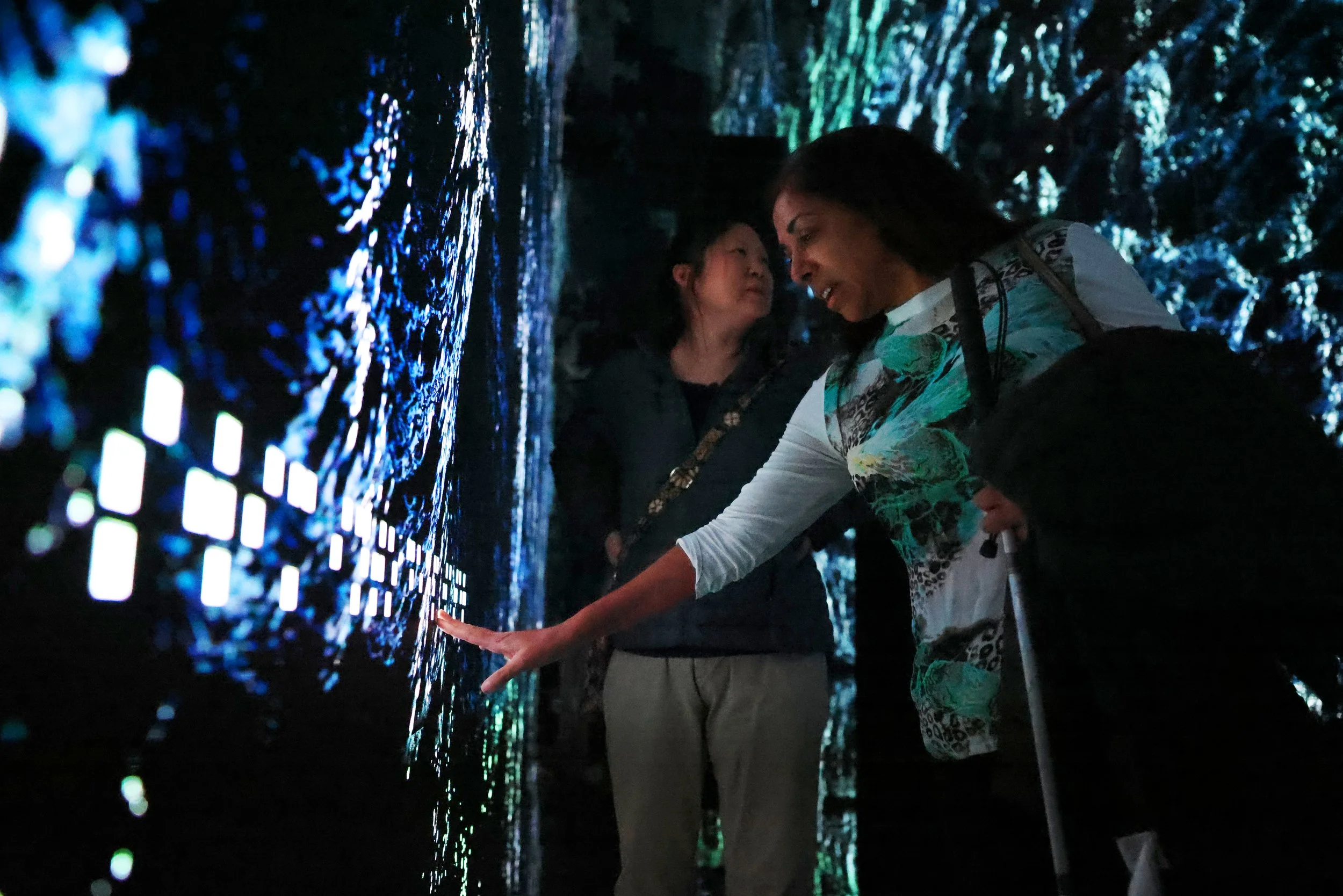
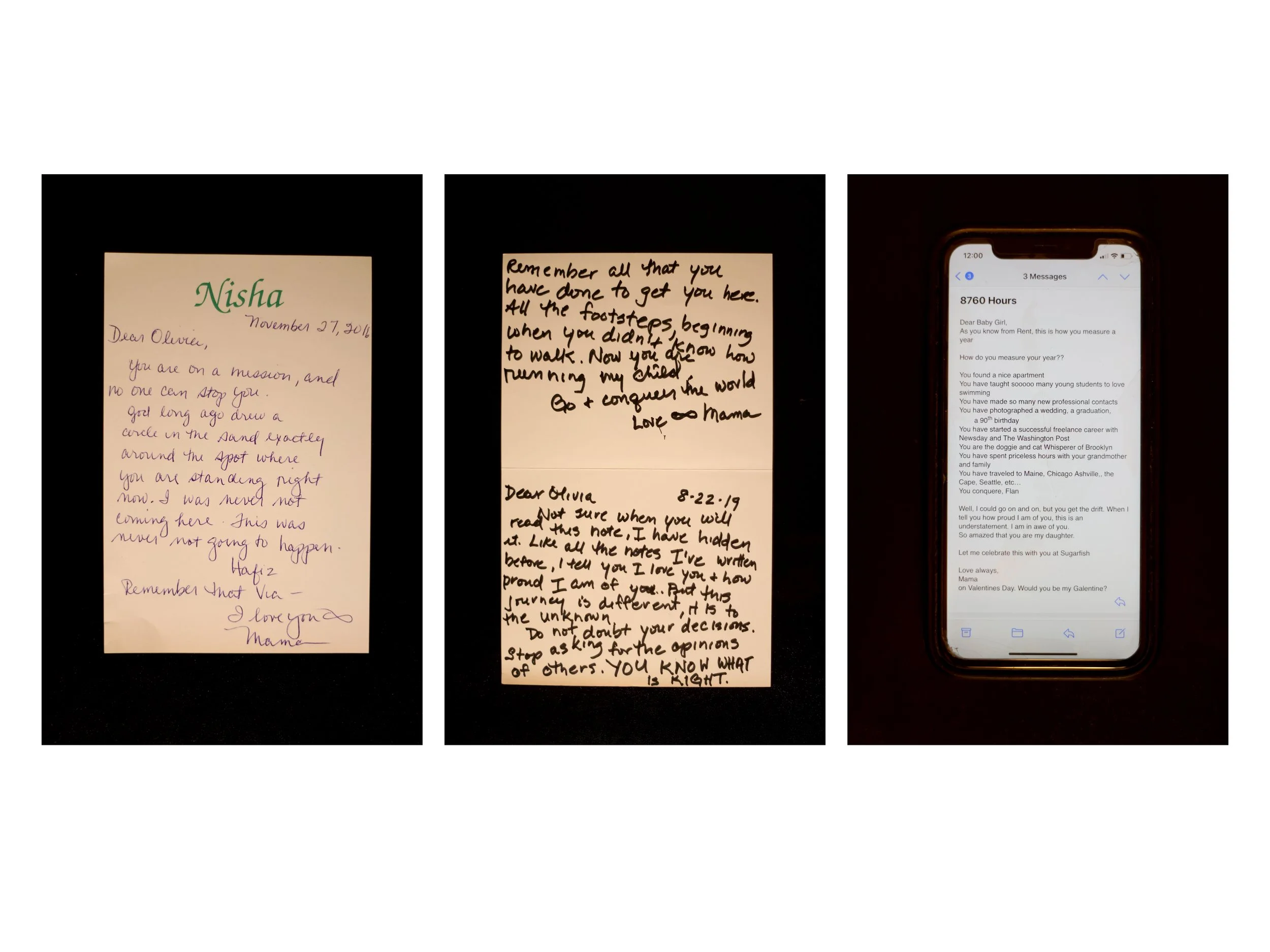
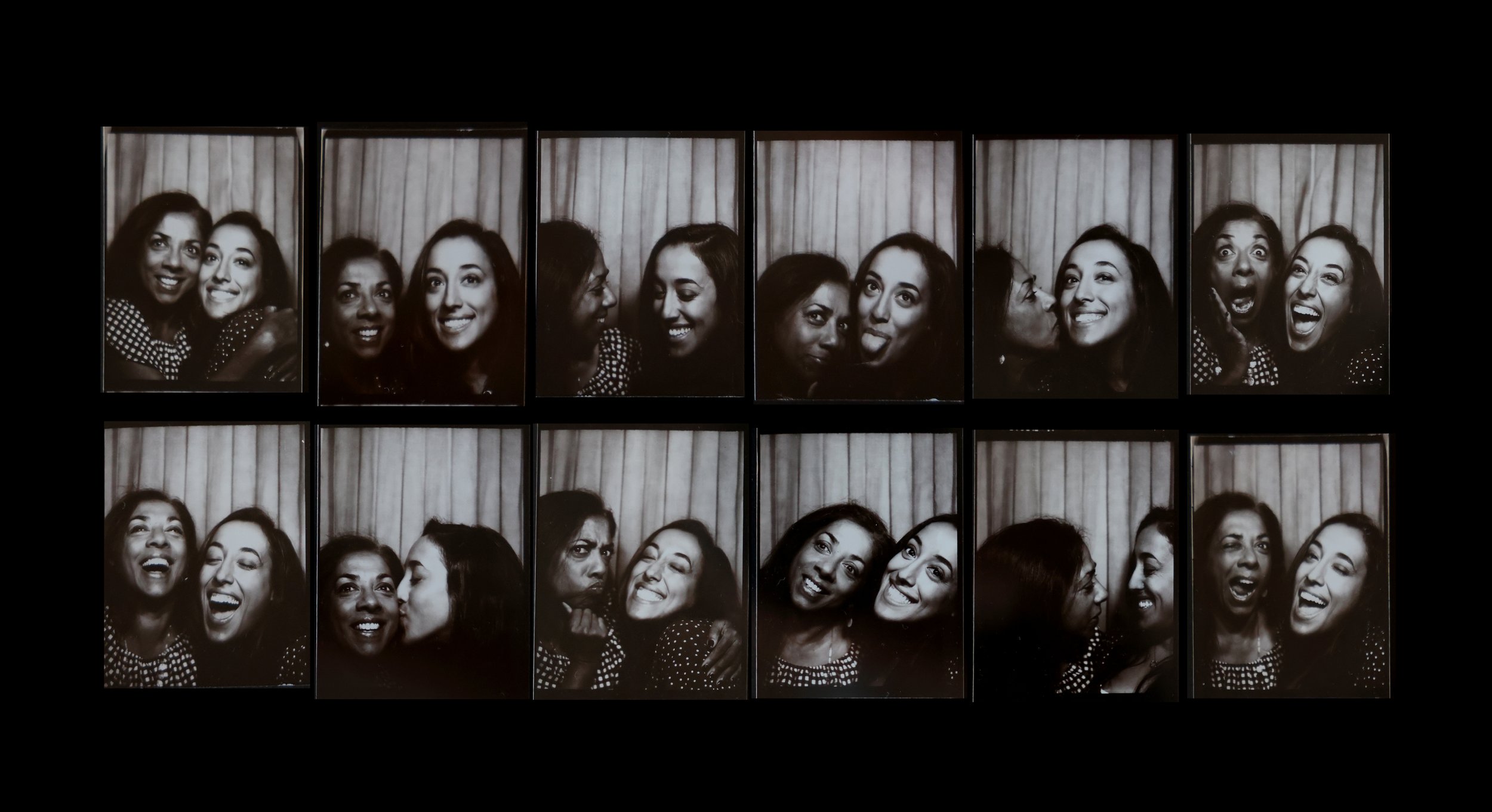
My mother, Nisha Falcigno, 61, was diagnosed in her early 30s with cone-rod dystrophy, a rare, genetic eye disorder that slowly deteriorates vision. For much of her life, she lived as a sighted person with some limitations. But a rapid decline in her vision in the past 10 years now classifies her as legally blind with low vision. Since my mother was no longer able to drive, she left her suburban home in Connecticut, where she had lived for 25 years and raised her children, to return to New York City. The grid system and her familiarity with the city made it an ideal place to live. “It’s one of the only places I knew with my eyes closed,” she said.
She found support in rehabilitative services at the New York State Commission for the Blind, Lighthouse Guild and VISIONS. She learned to walk with a white cane and read Braille and trained in screen reader software such as Job Access with Speech (JAWS), audio descriptions and voice-over. She made adjustments so she could do simple tasks such as pouring a glass of water — by using bright-colored drinking glasses instead of clear ones — and complicated ones such as reading instructions on a medicine bottle — by using a screen reader service — tasks that are often overlooked by sighted people. “My loss of vision was debilitating. I didn’t know what to do first. It was like learning how to walk again,” my mother said.
She hopes to remove the stigma that she said the sighted world projects onto the blind community. She wants to highlight the skills of disabled people and push back against the notion that a disability is a death sentence. Her strength has taught me to be more resilient. I believe there is no battle that is insurmountable because I watch my role model overcome hurdles daily. I’ve watched her fall and get back up, stronger every time. And often, when I walk into her house, I learn about a new gadget or tool she has discovered to help her perform her daily tasks. Since I was a child, I have been asking, “How does she do that?” and my mother has been responding jokingly, “Very carefully.”
Now, when people ask me how she does anything with her visual impairment, I respond, jokingly, “Very carefully.”
To read the full story, click here.